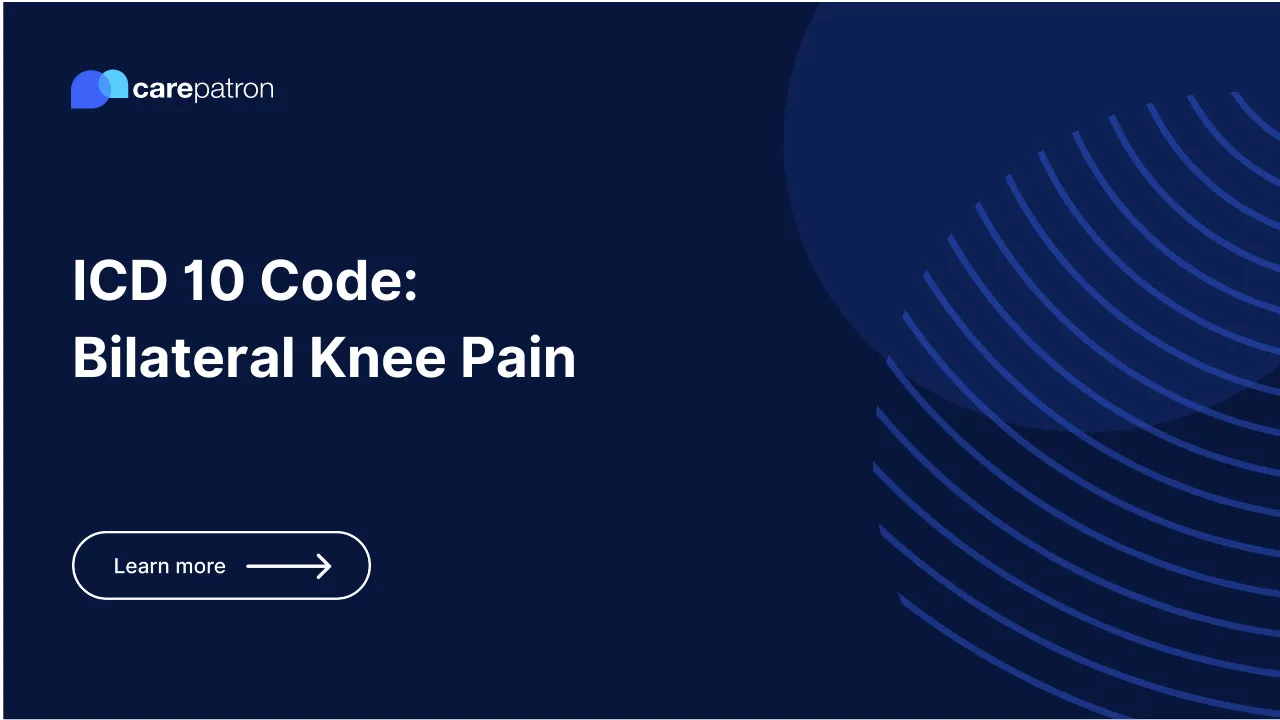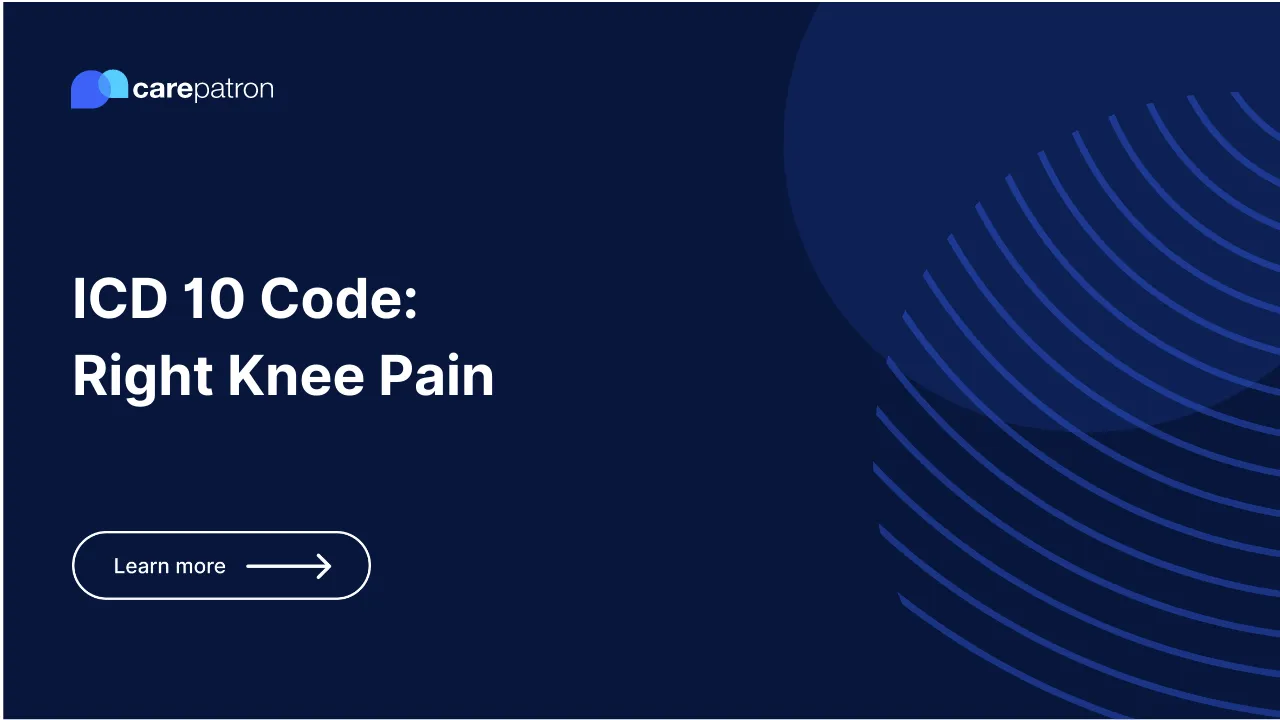Tendinitis ICD-10-CM Codes
Discover the specific ICD-10 Codes Used for Tendinitis with Carepatron. They aid in accurately diagnosing and treating this common inflammation of tendons.

What ICD-10 Codes Are Used for Tendinitis?
Tendinitis refers to the inflammation of a tendon, leading to pain and discomfort in the affected area. This common condition can affect various tendons in the body, and accurate coding is essential for precise diagnosis and effective treatment. Here are some of the commonly used ICD-10 codes for various forms of tendinitis:
- M65.271 Achilles Tendinitis: Specifically localized to the Achilles tendon, this condition often results from overuse, especially in runners or other athletes. It leads to painful inflammation at the back of the heel, characterized by pain and swelling. Timely intervention can prevent further complications.
- M65.231 Rotator Cuff Tendinitis: Involving the tendons of the rotator cuff, this type of tendonitis is prevalent among athletes, particularly those playing baseball or engaging in activities that require overhead motions. Symptoms include shoulder pain and restricted movement, often requiring physical therapy or other treatments.
- M65.221 Right Shoulder Tendinitis: This code refers specifically to tendinitis in the right shoulder. Overuse or acute injury may lead to this condition. Common symptoms include pain, swelling, and stiffness, which may restrict daily activities.
- M65.242 Left Shoulder Tendinitis: Similar to right shoulder tendinitis, this code is used for the same condition in the left shoulder. Pain and restricted movement are typical symptoms requiring careful diagnosis and tailored treatment.
- M76.60 Patellar Tendinitis: Also known as "Jumper's knee," this condition involves the inflammation of the tendon connecting the kneecap to the shin bone. It's common in athletes and individuals engaged in jumping or running activities. Early diagnosis can facilitate effective recovery.
- M67.90 General Tendinitis: This non-specific code covers tendinitis affecting any tendon in the body. Various factors, including overuse, injury, or rheumatic conditions, may cause it. This broad category helps code tendinitis when the specific location is not determined.
Accurate coding using these ICD-10 codes ensures that healthcare providers understand the exact nature and location of the tendinitis, allowing them to prescribe the right course of treatment.
For a comprehensive guide to coding tendinitis conditions, check out the Tendinitis ICD Codes at Carepatron.
Which Tendinitis ICD codes are billable?
- M65.271: Yes
- M65.231: Yes
- M65.221: Yes
- M65.242: Yes
- M76.60: Yes
- M67.90: Yes
Clinical Information
Cause: Tendinitis typically occurs due to repetitive strain or overuse of a tendon. Activities that place constant stress on the affected tendons can lead to inflammation and pain.
Symptoms: The condition manifests through various symptoms, including:
Pain, especially during movement
- Swelling in the affected area
- Stiffness restricts the range of motion.
- Warmth or tenderness to the touch
Risk Factors: Certain factors may increase the risk of tendinitis, such as:
- Age: Tendons become less elastic with age, increasing susceptibility.
- Occupation or hobbies involving repetitive movements.
- Specific sports put stress on particular tendons.
Diagnosis: Early diagnosis is crucial for effective treatment. It usually involves:
- A physical examination to check for tenderness
- Imaging tests like X-rays or MRIs, if required
Treatment: Various treatment options are tailored to the severity and location of the condition.
- Rest: Allowing the affected tendon to heal
- Ice: Applying cold packs to reduce swelling
- Pain Relievers: Medications like NSAIDs to manage pain
- Physical Therapy: Specific exercises to strengthen muscles and improve flexibility
- Injections or Surgery: In more severe cases, corticosteroid injections or surgical intervention might be necessary.
Prevention: Steps to prevent tendinitis include:
- Proper warm-up and stretching before activities
- Using proper equipment and technique
- Regular strengthening exercises
Prognosis: With proper care and treatment, most cases of tendinitis respond well, and individuals can return to regular activities. Chronic problems can be managed with ongoing care.
Understanding the intricacies of tendinitis helps in providing targeted care and facilitates recovery. Early intervention and adherence to a tailored treatment plan can prevent chronic issues and restore normal function.
Commonly asked questions
When diagnosing a patient with inflammation or swelling in a tendon, the appropriate ICD code must be used.
Treatment often includes rest, pain medication, ice application, and physical therapy.
A diagnosis code for tendinitis provides a standardized way to identify and bill for the specific type of tendinitis being treated, such as Achilles tendinitis or rotator cuff tendinitis.

.jpg)
.png)




.webp)
.webp)
.webp)
.webp)
.webp)
.webp)
.webp)
.webp)
.webp)
.webp)
.webp)
.webp)
.webp)
.webp)
.webp)
.webp)
.webp)
.webp)
%2520(1).webp)
.webp)
.webp)
.webp)
.webp)
.webp)
.webp)
.webp)
.webp)
.webp)
.webp)
.webp)
.webp)
.webp)
.webp)
.webp)
%2520(1).webp)
.webp)
.webp)
.webp)
.webp)
.webp)
.webp)
.webp)
.webp)
.webp)
.webp)
.webp)
.webp)
.webp)
.webp)
.webp)
.webp)
.webp)
.webp)
.webp)
.webp)
.webp)
.webp)
.webp)
.webp)
.webp)
.webp)
.webp)
.webp)
.webp)
.webp)
.webp)
.webp)
.webp)

.webp)
.webp)
.webp)
.webp)
.webp)













.webp)
.webp)




.webp)


